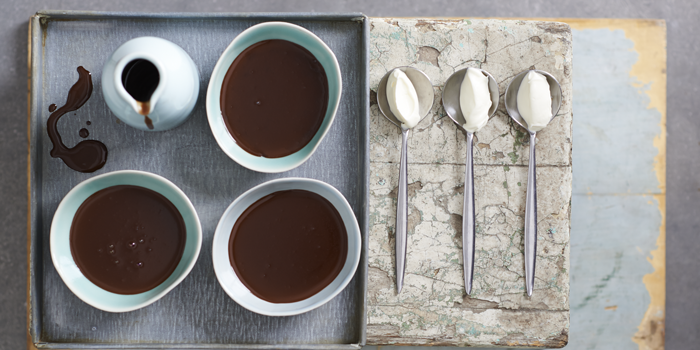
Pronounce it: dahk chok-o-let
Dark chocolate means the shiny, dark-reddish brown treat produced from the cacao bean, theobroma cacao, widely sold as pressed blocks, bars or as a coating for sweet fillings.
Before Joseph Fry developed the first mass-produced chocolate bar in Bristol, in 1847, dark chocolate was more commonly consumed as a thick, gritty drink that needed constant stirring to keep it emulsified. This original drinking chocolate was simply ground up cacao beans, sometimes made into pastilles, to which hot water or milk, sugar and spices were added.
Mr Fry’s technique involved separating the beans from their fat, known as cocoa butter, and the cocoa solids. Dark chocolate bars are made by adding back only a proportion of cocoa butter to a greater or lesser proportion of cocoa solids in a complicated process that requires careful milling and exact changes of temperature to create a smooth texture. Tempering then encourages the mixture to crystallise and set in a way that gives both snap and shine.
Availability
Good or bad, you are never far from chocolate.
Choose the best
Purists will say dark chocolate needs only to include cocoa solids, cocoa butter, sugar and, perhaps vanilla: some will insist on including lecithin, a sort of thickener that gives longer life and better integrity to the texture. It’s common for vanilla to be replaced by vanillin, an artificial substitute used to reduce cost. Other sweeteners, such as agave syrup, can be used and as well as differences in flavour based on dark chocolate’s geographical origins, entrepreneurial chocolate makers continue to explore the potential it offers in being able to combine with almost anything sweet or savoury.
The higher the stated cocoa solid content of a bar, the deeper and more bitter that chocolate will taste. However, a stated high cocoa solid content does not mean low sugar content and sugar might be amplified as the cocoa solid content is increased. This should be made clear on labelling.
Generally, old well-proven combinations, such as with red berries, citrus, spices, coffee, tropical fruits and toasted nuts give most enjoyment. Chilli is now commonly included but should be used lightly and in combination with at least one other ingredient or will give a notably one-dimensional result and can totally disguise the essential dark chocolate flavour.
Whatever the taste, there are two infallible tests that reveal where dark chocolate has been carefully made with good ingredients. First, high quality dark chocolate must have a noticeable shine, almost mirror-like, something obtained only by precise tempering – the final process of production. Second, it must have a definite snap when you break it. Without both of these, you have something inferior, whatever its price. The requirement of a high shine also applies to filled chocolates.
Store it
Chocolate does not need to be refrigerated but in hot weather or centrally-heated houses, lightly chilled chocolate is nicer to eat. Long-term cold storage will make the chocolate bloom with what looks like clouds of mould. This is quite harmless and is unlikely to change its flavour. At a cool, constant temperature chocolate keeps its virtue for many weeks, perhaps months.
Cook it
The expression ‘cooking chocolate’ is meaningless as all chocolate can be used in cookery. The term was once used to indicate a higher cocoa solid content with less sweetness than mass marketed chocolate bars, but as 70% or higher cocoa solid chocolates are now widely available on supermarket shelves, you can choose according to your preference. If the chocolate you select does not give a deep enough colour or flavour, mix in cocoa powder (or cacao) until the colour and flavour are more satisfactory.
Gentle pulsing in a microwave is possibly a better way to melt chocolate than over hot water, because it is so much faster – it will be molten while holding its shape. Use only short bursts and stir often to prevent it from turning grainy.
Discover our dark chocolate recipe collection.
Be the first to comment on "Dark chocolate"